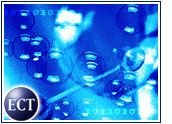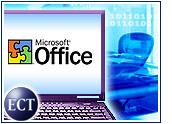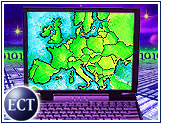
The phrase “Real Time Enterprise” (RTE) is a siren song of unquestionable allurefor many enterprises. Whether a company wishes to respond to customer data morequickly or communicate better internally, having a back end that responds immediatelyto the rapid flow of corporate information represents an ideal.
So, given the obvious benefits of on-demand information, why have so many companiesnot yet revved up to real-time speed across the enterprise?
Murky Definition
Lest the idea of RTE take on mythic proportions, it is important to remember thata “real-time enterprise” does not necessarily operate in literal real-time. “Real-timeenterprise doesn’t mean instantaneous data processing,” Gartner senior analyst Don Free told the E-Commerce Times. “It means being able to have the data you need, when you need it.”
This “just-in-time” (JIT) approach, identified by a Gartner research report asa key element of the real-time enterprise, can keep companies nimble. But it isnot an easy principle to put into practice.
After all, responding to customers outside the enterprise and serving data to workersinside the enterprise both are unpredictable challenges. By necessity, the ideal definition of RTE is “readiness for anything.” The daunting nature of total IT readiness is one reason real-time enterprise is still on the distant horizon for most companies. Company alignment, costs and enterprise culture present additional roadblocks.
Aligning Strategies
Aligning business strategy with IT strategy is the first, and sometimes the biggest, challenge. The problem is compounded by the fact that a company’s business side might not be aware of problems that better data handling on the technical side would both illuminate and help solve. Customer discontent, for example, is brought to the forefront by CRM that operates closer to real-time, which in turn helps builds bettercustomer relationships.
A secondary problem is cultural resistance within the enterprise. Accelerating dataprocessing usually involves crossing enterprise borders that traditionally define jobsand delineate territories. In other words, integration can cause turmoil. “Lines of business process tend to be self-sufficient,” Gartner’s Free said. “You get economies of scale by sharing things. This is where difficulties definitely arise.”
Despite potential conflicts that may erupt within an organization, the need to integrate data sources was echoed by Ted Schadler, principal analyst with Forrester Research. “The big challenge for the CIO is, they do not want separate, parallel systems,” Schadler told the E-Commerce Times. “They want to cut their costs by building single points of contact into back-end systems.”
Cost Issues
In the struggle to sell data integration across the company, IT — the technical side of a business — usually must plead its case to business-focused executives, Ken Vollmer,research director for integrated strategies at Giga Information Group, told the E-Commerce Times.
In fact, the budgetary considerations of RTE present a reality to which everyone in acompany must conform. With IT budgets under strict control and limited spendinggrowth forecast through 2004, most enterprises are avoiding large and costlyinitiatives.
Therefore, the key to getting close to RTE is to take an incremental approach. Attempting a broad, enterprise-wide upgrade is both fiscally unrealistic and less conducive tosuccess. “Take it slow,” Gartner’s Free said. “Be methodical. Go for low-hangingfruit first. As you gain experience, move on to other business processes.”
Complexity Issues
Why is moving an enterprise toward the real-time ideal such a multifaceted and complex undertaking? Every business has multiple parts and processes. Furthermore, each aspect of the IT landscape features several competing technologies from which to choose — and some of those technologies are immature.
For example, radio frequency identification (RFID), a sort of virtual barcode, has beenmuch-heralded as a real-time tracking technology. But its benefits to the enterprise cannot be realized without wide cooperation among retailers, manufacturers and technology suppliers. According to a Gartner report, significant adoption of RFID is forecast for 2006 at the earliest, with about 30 percent of traditional barcodes expected to be replaced by RFID by year-end 2010.
Web services is another type of technology that most analystsagree will be important in speeding up the enterprise back end. But here,too, adoption is hampered by lack of coordination. The situation is even moreamorphous than with RFID, because different Web services vendors define thesector in different ways, leading to rampant confusion among their customers incorporate IT departments.
Into the Future
There is little doubt that RTE points the direction for business and ITprocess. Like some other solutions, though, RTE can mean different thingsto different companies. Integrating sales channels, gradually eliminatingbatch processing of customer orders, inching CRM closer to real-timeand implementing collaborative tools inside the firewall, among othergoals, each represent an aspect of the ideal RTE.
Comprehensive RTE is unquestionably daunting and costly. “An effective RTEinitiative … demands a comprehensive transformation of corporate culture,”a Gartner report stated. But by thinking globally while acting tacticallyand improving one piece of the puzzle at a time, enterprises can movetoward the ideal future in which every piece of information is in theright place exactly when it is needed.













































Social Media
See all Social Media